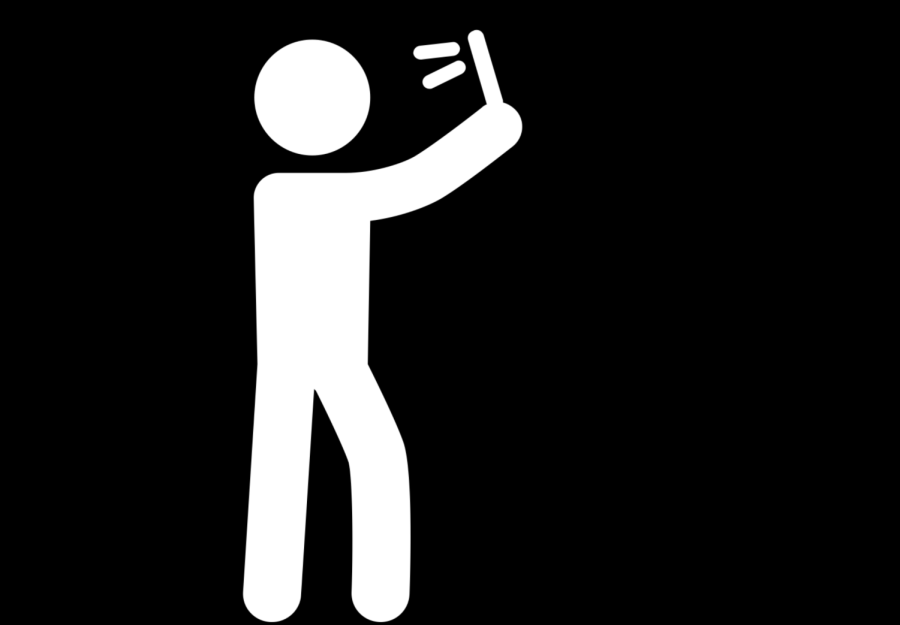POV: Cringe culture brings back embarrassing moments
Nuances of cringe culture and its veiled role in bullying
Looking through your camera roll or Snapchat memories from middle school, it is most likely filled with “aesthetic” Starbucks drink photos, blank screens with an 11:11 time stamp, or even the infamous dog filter. Now reaching even farther into middle school, emerges the era of dabbing and musical.ly, leaving you with one overwhelming feeling: cringe.
“Cringe culture” is a genre of comedy that derives humor from social awkwardness and embarrassing situations that happened in the past, according to the Atlantic. It often is deemed as harmless, relatable jokes about actions that are no longer accepted by society’s rapidly changing norms.
Hannah Kapur (12) reflected on a common middle school experience that today is only done sarcastically.
“One of the most embarrassing things was taking a picture at 11:11, writing someone’s name, and posting it on your story. I don’t know why we did that, but it was just cringe,” Kapur said.
Crista Mathers (12) also described her unique experience with cringe and how she could witness the evolution of her character from it.
“Looking back in middle school, I had a YouTube channel that was very cringe worthy… It shows a side of me that I grew out of. I feel like I was immature and crazy and did a bunch of weird stuff. And I just look back on it and ask, why did I do that?” she explained.
However “cringey” these experiences may feel, oftentimes they are the experiences that allow one to mature into the person they are today. Being reminded of the embarrassment may not be the most pleasant experience but a necessary part of growing up, according to Mathers.
“I don’t think I regret any of it because it was just a part of being a middle school student. I can’t take it back, and I feel like I learned from it,” she said.
Similarly, Shriya Avula (12) agreed that middle school was a time for growth and learning from mistakes.
“I think you’re able to mature into yourself as a person based on what you like and don’t like when you look back to your past. Behavioral-wise, thinking that this is not a quality I want to carry on because I don’t like that aspect is what sparks change in a person,” said Avula.
Kapur also concluded that these memories are not only an opportunity to grow but are also a lighthearted way to connect with others.
“I felt like I was a part of a movement because everyone was doing it [posting 11:11]. Even though they are cringing now, at the time you were just doing what everybody else did, and now it is something funny we all can unite on,” she said.
This relatability is the root of cringe culture. Because a majority of people have similar experiences, it becomes a memory that is valid and accepted as something of the past.
Humans turn this into a form of comedy that allows them to process embarrassment through compassion. According to Kaitlyn Tiffany, in an article published in the Atlantic, cringe comedy elicits feelings of sympathy and self-recognition, which allows the audience to personally connect to these jokes.
However, there is also a darker side of cringe culture. One part comes from feeling embarrassment from the past and making jokes about one’s past actions, but another part comes from making fun of interests that deviate from societal norms. According to Tiffany, this stems from an internal hatred for what is different and is projected through making jokes about people for having a certain interest or identity. This judgemental humor is often covered up to be “just a joke”, but can ultimately have harmful alternate effects.
“I really wanted to do theater and choir in high school, but I feel like the environment in high school was different because being a part of those groups put you into a certain category of who you are… The theater kids had that ‘theater kid’ connotation,” Mathers explained. “Those connotations that came with it pushed me into doing other things. But I honestly regret not doing it and applaud those that followed their passions in theater.”
Not only can this side of cringe culture leave people with unfulfilled desires, but they can give rise to feelings of disturbance for the victims of this comedy style.
Amy Christian, a director of the Student Diversity Council and an Equity Coordinator, brought light to experiences of some students that have been on the receiving end of these stereotype-based jokes.
“In SAGA (Sexuality and Gender Acceptance) some of our students in the LGBTQ+ identity community said that they’ve been victims to those sorts of comments that other people would have thought ‘Oh, I was just making a joke.’ But that is not the way it is felt and received by the person who is either having the joke said to them or even just overhearing the jokes too,” Christian said.
Tanishka Gajula (12) suggested that the spread of these jokes and this genre of comedy may have increased due to the rapid rise of the internet and popular social media platforms like TikTok.
“The Internet has slowly started to become more insensitive. I feel like people are not understanding that there’s another person on the other side of the screen and that they are a real life person,” Gajula stated.
The line between light-hearted, relatable content and veiled bullying targeted at a certain group has become difficult to discern as our generation traverses through the harsh environment created by the Internet.
“Dry, sarcastic and dark humor is really popular right now, which is why it’s making it hard to understand that for something to be funny, it has to be funny for both sides.” Avula said, “And if it’s funny from only one side, now you are just bullying somebody.”

